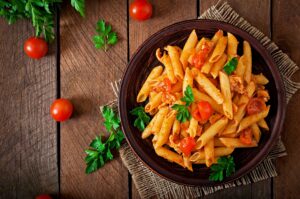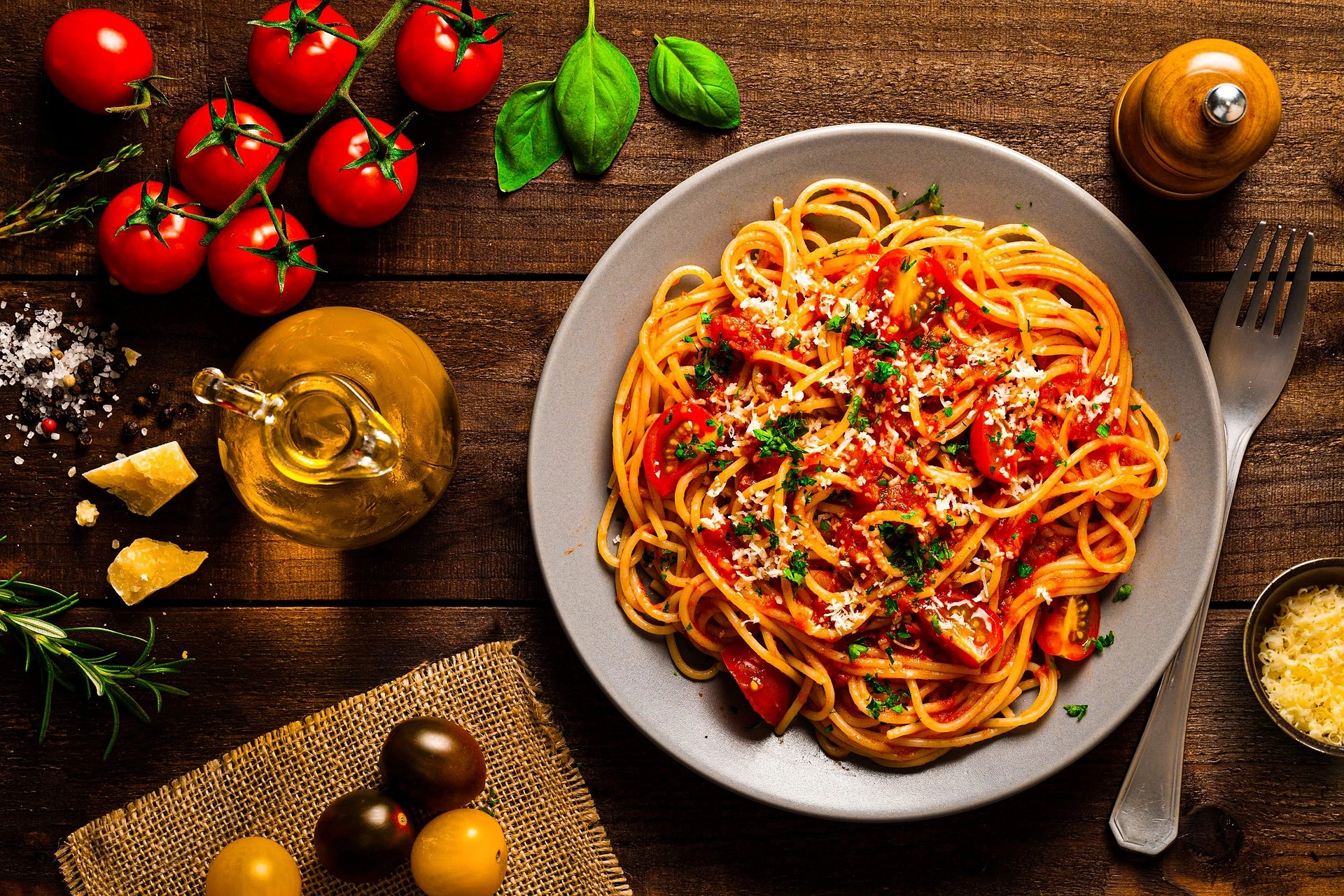Introduction: Why Corkscrew Pasta Deserves a Spot in Your Kitchen
Corkscrew pasta, also known as cavatappi, is more than just a shape; it’s a culinary experience waiting to happen. Whether you’re rediscovering old family recipes or trying something new, this spiral-shaped pasta brings fun and flavor to your table. Its ridged, tubular design isn’t just for aesthetics—it’s purpose-built to cling to sauces, ensuring every bite is packed with taste. Once you’ve experienced its versatility and charm, you’ll find yourself reaching for corkscrew pasta again and again.
What Is Corkscrew Pasta?
Understanding the Shape and Types
Corkscrew pasta, commonly referred to as cavatappi, is a ridged, spiral-shaped pasta that stands out for its unique ability to hold sauces. It’s a favorite for baked dishes, creamy sauces, and hearty pasta salads. Depending on where you are, you might encounter different names for this pasta, such as cellentani in Italy. The spirals not only add visual appeal but also enhance the overall texture of your dish.
The History of Corkscrew Pasta
Originating in Italy, corkscrew pasta has a rich heritage tied to traditional Italian cooking. Its design was inspired by the shape of a corkscrew, symbolizing creativity and practicality in Italian kitchens. Over time, it has become a global favorite, appreciated for its ability to elevate simple dishes and adapt to modern cuisine trends.

Cooking Corkscrew Pasta Perfectly
Steps for Ideal Texture
Achieving perfectly cooked corkscrew pasta starts with the basics. Here’s how to get it right every time:
- Boil water generously: Use at least 4 quarts of water for every pound of pasta and add a tablespoon of salt for flavor.
- Cook until al dente: Follow the package instructions but start taste-testing a minute or two early. Al dente pasta should be firm yet tender.
- Stir occasionally: This prevents the spirals from sticking together.
- Reserve pasta water: Scoop out a cup of starchy cooking water before draining to enhance your sauce later.
Common Mistakes to Avoid
- Overcooking: Soft pasta loses its texture and can’t hold sauces well.
- Skipping the salt: Unsalted water leads to bland pasta.
- Ignoring the pasta water: This liquid is a secret weapon for creating velvety sauces.
Best Sauces for Corkscrew Pasta
Classic Pairings
The beauty of corkscrew pasta lies in its ability to pair beautifully with a variety of sauces:
- Marinara Sauce: The simplicity of tomatoes, garlic, and basil highlights the pasta’s texture.
- Alfredo Sauce: Its creamy richness wraps perfectly around the spirals.
- Pesto: The bold flavors of basil, olive oil, and Parmesan cling to every curve.
Innovative Sauces
Experiment with unique flavors to make your meals memorable:
- Spicy Arrabbiata: Add a fiery kick with chili flakes and garlic.
- Garlic Butter with Herbs: Keep it simple and aromatic for a light meal.
- Sundried Tomato Cream Sauce: Indulge in a gourmet twist with this luxurious option.
| Sauce | Key Ingredients | Cooking Time |
|---|---|---|
| Marinara | Tomatoes, garlic, basil | 20 minutes |
| Alfredo | Cream, butter, Parmesan | 15 minutes |
| Pesto | Basil, olive oil, pine nuts, garlic | 10 minutes |
Creative Corkscrew Pasta Recipes
Crowd-Pleasing Options
- Corkscrew Pasta Bake
- Ingredients: Cavatappi, marinara sauce, mozzarella, ground beef.
- Steps:
- Cook pasta until al dente.
- Brown ground beef and mix with marinara sauce.
- Combine pasta, sauce, and cheese in a baking dish.
- Bake at 375°F until bubbly and golden.
- Garlic Shrimp Cavatappi
- Ingredients: Shrimp, garlic, olive oil, white wine, parsley.
- Steps:
- Sauté shrimp in olive oil with garlic.
- Deglaze the pan with white wine.
- Toss with cooked pasta and fresh parsley.
- Vegetarian Pesto Primavera
- Ingredients: Seasonal vegetables, pesto, Parmesan.
- Steps:
- Sauté vegetables until tender.
- Mix with cooked pasta and pesto.
- Garnish with grated Parmesan.
Healthy Variations
- Use whole-grain or gluten-free corkscrew pasta for added nutrients.
- Incorporate lean proteins like grilled chicken or turkey.
- Add more vegetables such as spinach, zucchini, or bell peppers for a balanced dish.

Pairing Corkscrew Pasta with Sides
Ideal Accompaniments
- Fresh Green Salads: A crisp salad with a light vinaigrette balances the richness of pasta dishes.
- Garlic Bread: Warm, buttery garlic bread is a classic complement.
- Roasted Vegetables: Oven-roasted veggies add a smoky depth to your meal.
Tips for Storing and Reheating Corkscrew Pasta
Storage Tips
- Refrigeration: Store leftovers in airtight containers for up to three days.
- Freezing: Freeze cooked pasta in resealable bags for up to two months. Thaw overnight in the fridge before reheating.
Reheating Tricks
- Stovetop: Heat pasta in a skillet with a splash of reserved pasta water or fresh sauce.
- Oven: Cover the pasta with foil and reheat at 350°F for 15-20 minutes.
- Microwave: Use a microwave-safe dish and add a little water to avoid drying out.
FAQs About Corkscrew Pasta
Common Questions Answered
- What makes corkscrew pasta unique?
- Its spiral shape holds sauces better than other types, making each bite flavorful.
- Can I use corkscrew pasta in any recipe?
- Absolutely! It works well in salads, soups, bakes, and more.
- How do I store uncooked corkscrew pasta?
- Keep it in a cool, dry put in an waterproof container.
- Is corkscrew pasta healthy?
- Opt for whole-grain varieties for added fiber and nutrients.
Conclusion: Embrace the Twist
Corkscrew pasta is a true kitchen hero, offering endless possibilities for delicious meals. Whether you’re cooking a quick weeknight dinner or preparing a feast for guests, its unique shape and adaptability make it a go-to choice. Try out the recipes, pair it with your favorite sides, and let this versatile pasta become a staple in your culinary adventures. So, grab a box today and twist into flavor!


